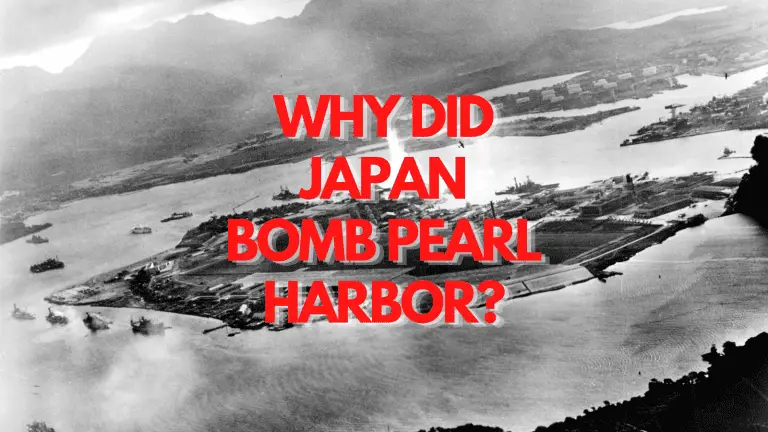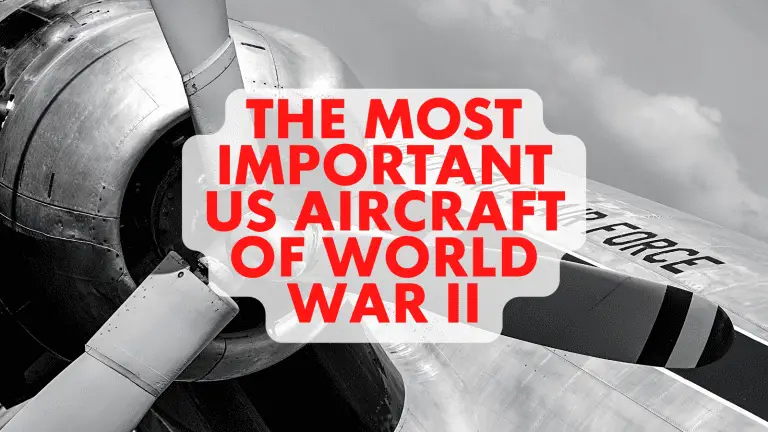10 Key facts about D-DAY
D-Day is the name given to the beginning of Operation Overlord, an invasion of Northern France by the Allies in WWII. D-Day was a complex operation that required significant planning and is often credited as the beginning of the end of the war in Europe. It consisted of storming five beaches on June 6, 1944, using cooperation between several international powers on a scale never attempted before. The significance of the Normandy Landings cannot be understated. They opened a much-needed second front in Europe to split German resources.
[/et_pb_text][/et_pb_column][/et_pb_row][et_pb_row _builder_version=”4.15.0″ _module_preset=”default” global_colors_info=”{}”][et_pb_column type=”4_4″ _builder_version=”4.15.0″ _module_preset=”default” global_colors_info=”{}”][et_pb_text _builder_version=”4.15.0″ _module_preset=”default” global_colors_info=”{}”]1. The letter D did not mean anything
[/et_pb_text][/et_pb_column][/et_pb_row][et_pb_row _builder_version=”4.15.0″ _module_preset=”default” column_structure=”1_5,3_5,1_5″][et_pb_column _builder_version=”4.15.0″ _module_preset=”default” type=”1_5″][/et_pb_column][et_pb_column _builder_version=”4.15.0″ _module_preset=”default” type=”3_5″][et_pb_image src=”http://historywithhenry.com/wp-content/uploads/2022/04/1.png” _builder_version=”4.15.0″ _module_preset=”default” alt=”Facts about D-Day” title_text=”1″ hover_enabled=”0″ sticky_enabled=”0″][/et_pb_image][/et_pb_column][et_pb_column _builder_version=”4.15.0″ _module_preset=”default” type=”1_5″][/et_pb_column][/et_pb_row][et_pb_row _builder_version=”4.15.0″ _module_preset=”default” global_colors_info=”{}”][et_pb_column type=”4_4″ _builder_version=”4.15.0″ _module_preset=”default” global_colors_info=”{}”][et_pb_text _builder_version=”4.15.0″ _module_preset=”default” global_colors_info=”{}”]Despite was modern uses of the term “D-Day” would have you believe; the original name of the Normandy invasion was not D-Day. It was simply termed “Operation Overlord.” The letter D means “day.” D-Day was frequently used to refer to the day of any important military operation throughout WWII. Days leading up to and after the operation were named accordingly (D-2, D-1, D-Day, D+1, D+2, etcetera). This name now exclusively refers to the Normandy invasions due to their importance and scale.
[/et_pb_text][/et_pb_column][/et_pb_row][et_pb_row _builder_version=”4.15.0″ _module_preset=”default” global_colors_info=”{}”][et_pb_column type=”4_4″ _builder_version=”4.15.0″ _module_preset=”default” global_colors_info=”{}”][et_pb_text _builder_version=”4.15.0″ _module_preset=”default” global_colors_info=”{}”]2. It was the largest amphibious invasion in history
[/et_pb_text][/et_pb_column][/et_pb_row][et_pb_row _builder_version=”4.15.0″ _module_preset=”default” column_structure=”1_5,3_5,1_5″][et_pb_column _builder_version=”4.15.0″ _module_preset=”default” type=”1_5″][/et_pb_column][et_pb_column _builder_version=”4.15.0″ _module_preset=”default” type=”3_5″][et_pb_image src=”http://historywithhenry.com/wp-content/uploads/2022/04/2-1.jpg” _builder_version=”4.15.0″ _module_preset=”default” alt=”Facts about D-Day” title_text=”2″ hover_enabled=”0″ sticky_enabled=”0″][/et_pb_image][/et_pb_column][et_pb_column _builder_version=”4.15.0″ _module_preset=”default” type=”1_5″][/et_pb_column][/et_pb_row][et_pb_row _builder_version=”4.15.0″ _module_preset=”default” global_colors_info=”{}”][et_pb_column type=”4_4″ _builder_version=”4.15.0″ _module_preset=”default” global_colors_info=”{}”][et_pb_text _builder_version=”4.15.0″ _module_preset=”default” global_colors_info=”{}”]The Normandy invasions were a massive undertaking culminating in months of planning and coordination. In less than a week, over 350,000 troops, 5,000 vehicles, and 100,000 tons of supplies had landed on the beaches of Normandy. The initial landings consisted of around half of that. The previous record-holder for amphibious invasions in history was that of the Gallipoli Campaign in WWI, which consisted of only a fraction of the manpower.
[/et_pb_text][/et_pb_column][/et_pb_row][et_pb_row _builder_version=”4.15.0″ _module_preset=”default” global_colors_info=”{}”][et_pb_column type=”4_4″ _builder_version=”4.15.0″ _module_preset=”default” global_colors_info=”{}”][et_pb_text _builder_version=”4.15.0″ _module_preset=”default” global_colors_info=”{}”]3. The German leadership thought the Normandy landings were Fake
[/et_pb_text][/et_pb_column][/et_pb_row][et_pb_row _builder_version=”4.15.0″ _module_preset=”default” column_structure=”1_5,3_5,1_5″][et_pb_column _builder_version=”4.15.0″ _module_preset=”default” type=”1_5″][/et_pb_column][et_pb_column _builder_version=”4.15.0″ _module_preset=”default” type=”3_5″][et_pb_image src=”http://historywithhenry.com/wp-content/uploads/2022/04/3.png” _builder_version=”4.15.0″ _module_preset=”default” alt=”Facts about D-Day” title_text=”3″ hover_enabled=”0″ sticky_enabled=”0″][/et_pb_image][/et_pb_column][et_pb_column _builder_version=”4.15.0″ _module_preset=”default” type=”1_5″][/et_pb_column][/et_pb_row][et_pb_row _builder_version=”4.15.0″ _module_preset=”default” global_colors_info=”{}”][et_pb_column type=”4_4″ _builder_version=”4.15.0″ _module_preset=”default” global_colors_info=”{}”][et_pb_text _builder_version=”4.15.0″ _module_preset=”default” global_colors_info=”{}”]Due to the robust misinformation campaign launched by the Allies leading up to the Normandy Landings, Nazi Germany thought Operation Overlord was fake. Allied intelligence purposefully leaked false landing sites and conflicting information, which, when paired with the fact that nothing like this had been done before – led German leadership to believe it was a rumour or misdirection. German attention was successfully directed to Norway, Calais, and other places rather than the actual landing sites using fake units and radio chatter.
[/et_pb_text][/et_pb_column][/et_pb_row][et_pb_row _builder_version=”4.15.0″ _module_preset=”default” global_colors_info=”{}”][et_pb_column type=”4_4″ _builder_version=”4.15.0″ _module_preset=”default” global_colors_info=”{}”][et_pb_text _builder_version=”4.15.0″ _module_preset=”default” global_colors_info=”{}”]4. The allied forces constructed fake armies in England to fool the Germans
[/et_pb_text][/et_pb_column][/et_pb_row][et_pb_row _builder_version=”4.15.0″ _module_preset=”default” column_structure=”1_5,3_5,1_5″][et_pb_column _builder_version=”4.15.0″ _module_preset=”default” type=”1_5″][/et_pb_column][et_pb_column _builder_version=”4.15.0″ _module_preset=”default” type=”3_5″][et_pb_image src=”http://historywithhenry.com/wp-content/uploads/2022/04/4-1.jpg” _builder_version=”4.15.0″ _module_preset=”default” alt=”Facts about D-Day” title_text=”4″ hover_enabled=”0″ sticky_enabled=”0″][/et_pb_image][/et_pb_column][et_pb_column _builder_version=”4.15.0″ _module_preset=”default” type=”1_5″][/et_pb_column][/et_pb_row][et_pb_row _builder_version=”4.15.0″ _module_preset=”default” global_colors_info=”{}”][et_pb_column type=”4_4″ _builder_version=”4.15.0″ _module_preset=”default” global_colors_info=”{}”][et_pb_text _builder_version=”4.15.0″ _module_preset=”default” global_colors_info=”{}”]To camouflage the military operation that would be known as D-Day, Allied forces placed dummy armies and convoys in several places in England. These dummies varied in complexity; some were simply strips of metal designed to give off false radar readings. Others were empty vehicles that were moved periodically. False wooden tanks were even constructed. The cleverest was crash test dummies airdropped in like paratroopers to suggest the landings would be elsewhere. In advance of the landings, many French communications were destroyed along the Northern border. This confusion and communications disruption helped sell the fake armies to German leadership.
[/et_pb_text][/et_pb_column][/et_pb_row][et_pb_row _builder_version=”4.15.0″ _module_preset=”default” global_colors_info=”{}”][et_pb_column type=”4_4″ _builder_version=”4.15.0″ _module_preset=”default” global_colors_info=”{}”][et_pb_text _builder_version=”4.15.0″ _module_preset=”default” global_colors_info=”{}”]5. The name of the German defences was The Atlantic Wall
[/et_pb_text][/et_pb_column][/et_pb_row][et_pb_row _builder_version=”4.15.0″ _module_preset=”default” column_structure=”1_5,3_5,1_5″][et_pb_column _builder_version=”4.15.0″ _module_preset=”default” type=”1_5″][/et_pb_column][et_pb_column _builder_version=”4.15.0″ _module_preset=”default” type=”3_5″][et_pb_image src=”http://historywithhenry.com/wp-content/uploads/2022/04/5-1.jpg” _builder_version=”4.15.0″ _module_preset=”default” alt=”Facts about D-Day” title_text=”5″ hover_enabled=”0″ sticky_enabled=”0″][/et_pb_image][/et_pb_column][et_pb_column _builder_version=”4.15.0″ _module_preset=”default” type=”1_5″][/et_pb_column][/et_pb_row][et_pb_row _builder_version=”4.15.0″ _module_preset=”default” global_colors_info=”{}”][et_pb_column type=”4_4″ _builder_version=”4.15.0″ _module_preset=”default” global_colors_info=”{}”][et_pb_text _builder_version=”4.15.0″ _module_preset=”default” global_colors_info=”{}”]While their intelligence was garbled and their inferences about the exact nature of Operation Overlord were incorrect, the German leadership was not stupid. To deter what was considered an inevitable invasion by the Allies, Hitler ordered the construction of The Atlantic Wall. This was meant to consist of 15,000 fortified locations with 300,000 soldiers to maintain them. However, material and manpower shortages led to German leadership in the group prioritizing what they thought were the most likely targets.
They fortified several points along the Northern border of France. Among these was Pas de Calais, which many considered the possible point of invasion. In Normandy, defences mainly consisted of barbed wire and mines at high tide marks. Some more substantial fortifications were located in the ports of Cherbourg and Saint-Malo. These low budget booby traps were meant primarily to deter, but there was great concern about the inadequacy of the fortifications. Field Marshal Erwin Rommell pushed to stop the invasion on the beach with tanks and held meetings about securing the airports. He also deployed mine formations known as Rommell’s Asparagus. However, in the end, his best efforts provided little resistance against the Normandy Landings.
[/et_pb_text][/et_pb_column][/et_pb_row][et_pb_row _builder_version=”4.15.0″ _module_preset=”default” global_colors_info=”{}”][et_pb_column type=”4_4″ _builder_version=”4.15.0″ _module_preset=”default” global_colors_info=”{}”][et_pb_text _builder_version=”4.15.0″ _module_preset=”default” global_colors_info=”{}”]6. Bad Weather delayed D-Day
[/et_pb_text][/et_pb_column][/et_pb_row][et_pb_row _builder_version=”4.15.0″ _module_preset=”default” column_structure=”1_5,3_5,1_5″][et_pb_column _builder_version=”4.15.0″ _module_preset=”default” type=”1_5″][/et_pb_column][et_pb_column _builder_version=”4.15.0″ _module_preset=”default” type=”3_5″][et_pb_image src=”http://historywithhenry.com/wp-content/uploads/2022/04/6.png” _builder_version=”4.15.0″ _module_preset=”default” alt=”Facts about D-Day” title_text=”6″ hover_enabled=”0″ sticky_enabled=”0″][/et_pb_image][/et_pb_column][et_pb_column _builder_version=”4.15.0″ _module_preset=”default” type=”1_5″][/et_pb_column][/et_pb_row][et_pb_row _builder_version=”4.15.0″ _module_preset=”default” global_colors_info=”{}”][et_pb_column type=”4_4″ _builder_version=”4.15.0″ _module_preset=”default” global_colors_info=”{}”][et_pb_text _builder_version=”4.15.0″ _module_preset=”default” global_colors_info=”{}”]Although the originally planned date was May 1st, a team of meteorologists could not agree on the weather forecast, and equipment for the landing was proving to be a struggle. As a result, the date was postponed until June 5th. June 19th was also considered, but leadership chose the 5th because they worried that the delay would cause them to lose the element of surprise. The date of the landings was delayed one more time due to severe weather – the eventual invasion occurred on June 6th.
[/et_pb_text][/et_pb_column][/et_pb_row][et_pb_row _builder_version=”4.15.0″ _module_preset=”default” global_colors_info=”{}”][et_pb_column type=”4_4″ _builder_version=”4.15.0″ _module_preset=”default” global_colors_info=”{}”][et_pb_text _builder_version=”4.15.0″ _module_preset=”default” global_colors_info=”{}”]7. Five beaches were invaded with 156,000 troops
[/et_pb_text][/et_pb_column][/et_pb_row][et_pb_row _builder_version=”4.15.0″ _module_preset=”default” column_structure=”1_5,3_5,1_5″][et_pb_column _builder_version=”4.15.0″ _module_preset=”default” type=”1_5″][/et_pb_column][et_pb_column _builder_version=”4.15.0″ _module_preset=”default” type=”3_5″][et_pb_image src=”http://historywithhenry.com/wp-content/uploads/2022/04/7.png” _builder_version=”4.15.0″ _module_preset=”default” alt=”Facts about D-Day” title_text=”7″ hover_enabled=”0″ sticky_enabled=”0″][/et_pb_image][/et_pb_column][et_pb_column _builder_version=”4.15.0″ _module_preset=”default” type=”1_5″][/et_pb_column][/et_pb_row][et_pb_row _builder_version=”4.15.0″ _module_preset=”default” global_colors_info=”{}”][et_pb_column type=”4_4″ _builder_version=”4.15.0″ _module_preset=”default” global_colors_info=”{}”][et_pb_text _builder_version=”4.15.0″ _module_preset=”default” global_colors_info=”{}”]One hundred fifty-six thousand soldiers carried out the initial invasion. Primary contributors were the United Kingdom, the United States, and Canada. The targets of the landings were five beaches along the coast of Normandy (Utah, Juno, Gold, Omaha, and Sword). These beaches were chosen because they were the most difficult to reach from Great Britain – making them the most unexpected targets. The Utah and Omaha beaches were primarily taken by U.S. troops, while Canadian forces took the Juno beach. Primarily British Troops attacked the Gold and Sword beaches.
[/et_pb_text][/et_pb_column][/et_pb_row][et_pb_row _builder_version=”4.15.0″ _module_preset=”default” global_colors_info=”{}”][et_pb_column type=”4_4″ _builder_version=”4.15.0″ _module_preset=”default” global_colors_info=”{}”][et_pb_text _builder_version=”4.15.0″ _module_preset=”default” global_colors_info=”{}”]8. The invasion started with Paratroopers
[/et_pb_text][/et_pb_column][/et_pb_row][et_pb_row _builder_version=”4.15.0″ _module_preset=”default” column_structure=”1_5,3_5,1_5″][et_pb_column _builder_version=”4.15.0″ _module_preset=”default” type=”1_5″][/et_pb_column][et_pb_column _builder_version=”4.15.0″ _module_preset=”default” type=”3_5″][et_pb_image src=”http://historywithhenry.com/wp-content/uploads/2022/04/8.png” _builder_version=”4.15.0″ _module_preset=”default” alt=”Facts about D-Day” title_text=”8″ hover_enabled=”0″ sticky_enabled=”0″][/et_pb_image][/et_pb_column][et_pb_column _builder_version=”4.15.0″ _module_preset=”default” type=”1_5″][/et_pb_column][/et_pb_row][et_pb_row _builder_version=”4.15.0″ _module_preset=”default” global_colors_info=”{}”][et_pb_column type=”4_4″ _builder_version=”4.15.0″ _module_preset=”default” global_colors_info=”{}”][et_pb_text _builder_version=”4.15.0″ _module_preset=”default” global_colors_info=”{}”]Before the landing vehicles hit the shore of the Normandy beaches, paratroopers were dropped into crucial locations in the French countryside. 20,000 British, American, and Canadian soldiers were tasked with supporting the oncoming invasion. These soldiers had one of the most dangerous jobs – they fell into unsecured space in the dead of night. To compound this issue, much of the navigation equipment being used was unreliable, and several groups ended up far from their intended Drop Zones. Countless soldiers sustained injuries in the landing or became lost. Despite this disorganized execution, the paratroopers were effective. German soldiers did not know where the attacks would come from, which disorganized them. It softened up the defence for the landing at dawn.
[/et_pb_text][/et_pb_column][/et_pb_row][et_pb_row _builder_version=”4.15.0″ _module_preset=”default” global_colors_info=”{}”][et_pb_column type=”4_4″ _builder_version=”4.15.0″ _module_preset=”default” global_colors_info=”{}”][et_pb_text _builder_version=”4.15.0″ _module_preset=”default” global_colors_info=”{}”]9. Not all beaches were secured on the first day
[/et_pb_text][/et_pb_column][/et_pb_row][et_pb_row _builder_version=”4.15.0″ _module_preset=”default” column_structure=”1_5,3_5,1_5″][et_pb_column _builder_version=”4.15.0″ _module_preset=”default” type=”1_5″][/et_pb_column][et_pb_column _builder_version=”4.15.0″ _module_preset=”default” type=”3_5″][et_pb_image src=”http://historywithhenry.com/wp-content/uploads/2022/04/9-1.jpg” _builder_version=”4.15.0″ _module_preset=”default” alt=”Facts about D-Day” title_text=”9″ hover_enabled=”0″ sticky_enabled=”0″][/et_pb_image][/et_pb_column][et_pb_column _builder_version=”4.15.0″ _module_preset=”default” type=”1_5″][/et_pb_column][/et_pb_row][et_pb_row _builder_version=”4.15.0″ _module_preset=”default” global_colors_info=”{}”][et_pb_column type=”4_4″ _builder_version=”4.15.0″ _module_preset=”default” global_colors_info=”{}”][et_pb_text _builder_version=”4.15.0″ _module_preset=”default” global_colors_info=”{}”]Despite the overall success of the attack, not all the beaches were secured on the first day. Omaha and Juno beaches saw particularly brutal fighting. Casualties reached 50% of the assault forces at Omaha beach in the first several hours. Juno beach experienced mass confusion, with an Ally tank even driving over several recovered wounded. It would not be until June 12th that the Ally forces would link up into a united front.
[/et_pb_text][/et_pb_column][/et_pb_row][et_pb_row _builder_version=”4.15.0″ _module_preset=”default” global_colors_info=”{}”][et_pb_column type=”4_4″ _builder_version=”4.15.0″ _module_preset=”default” global_colors_info=”{}”][et_pb_text _builder_version=”4.15.0″ _module_preset=”default” global_colors_info=”{}”]





